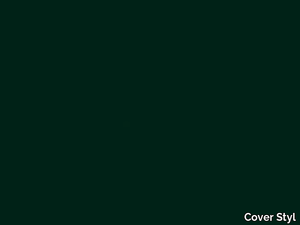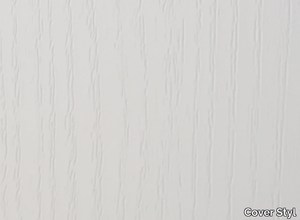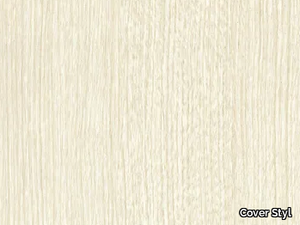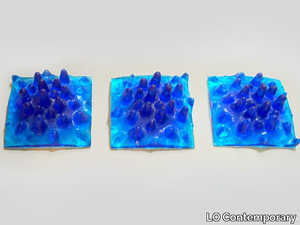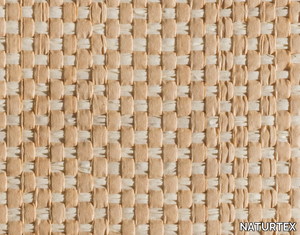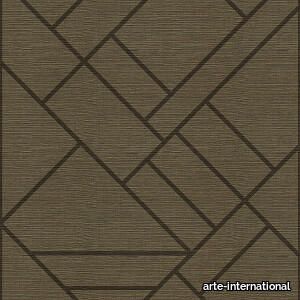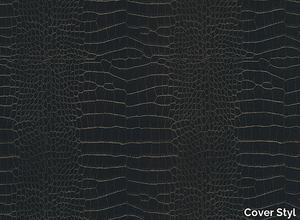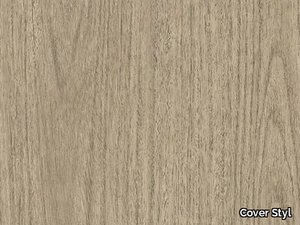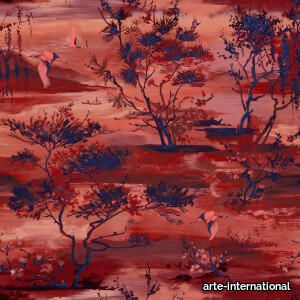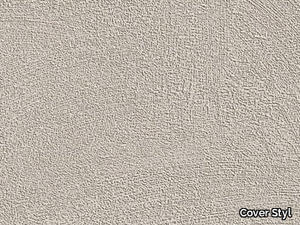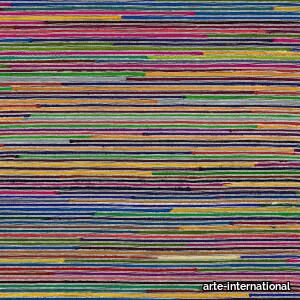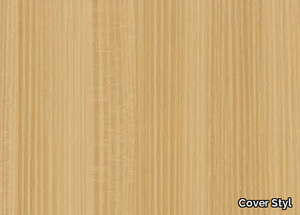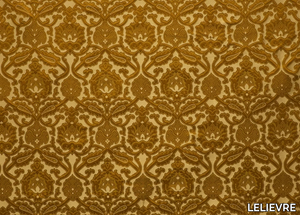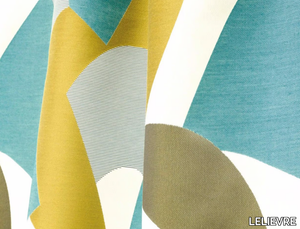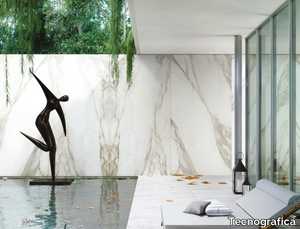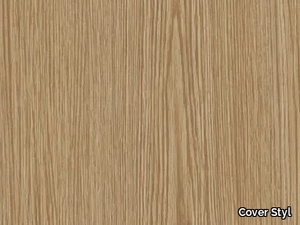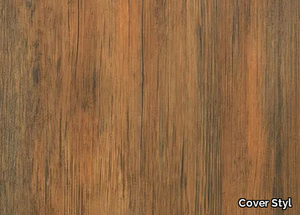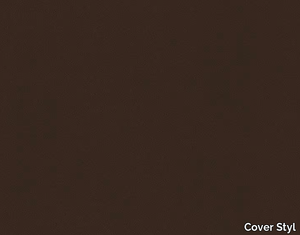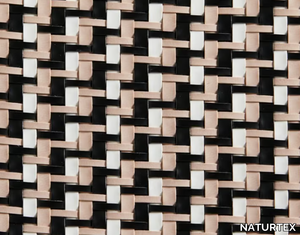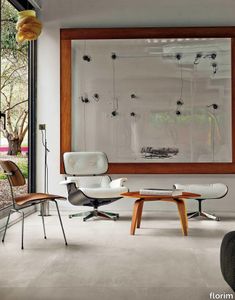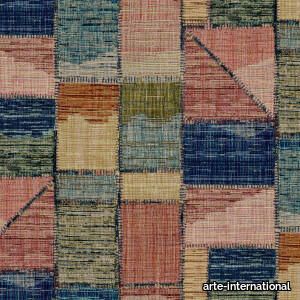Sergé
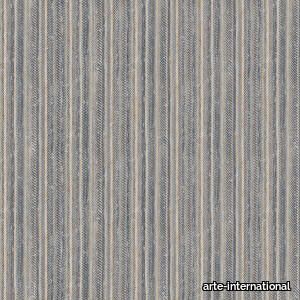
arte-international > Wallcovering
A timeless wallpaper that creates the illusion of real textile thanks to the combination of unique printing techniques and the use of velvety soft yarns.
Feroz
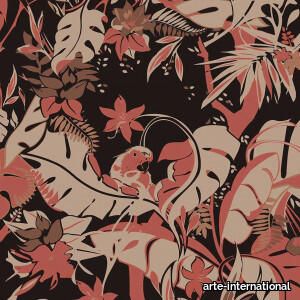
arte-international > Wallcovering
The stylised jungle flora of the Feroz pattern hides monkeys and jaguars peering out from their natural habitat.
Hover
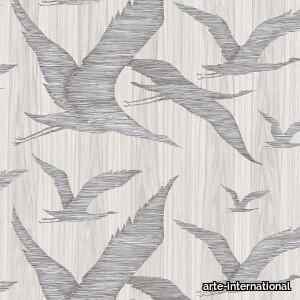
arte-international > Wallcovering
Hover depicts birds in their most natural form. Anyone who comes closer will see that the silhouettes consist of fine lines. Here too, the wood look in the background ensures that the forest never seems far away.
Pyramid
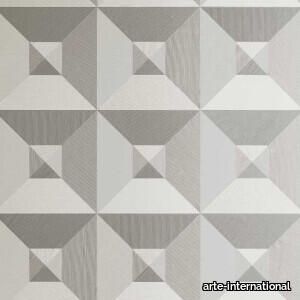
arte-international > Wallcovering
Welcome to ancient Egypt! Or perhaps you have been transported into a piece of art by Escher? Pyramid plays with sleek, geometric shapes that through its use of various colours, creates the illusion of depth. The design is also available in a monochrome finish, such as the monotone pattern Squared.
Symbol
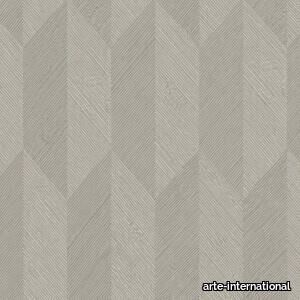
arte-international > Wallcovering
Want to try a bit of tribal? Arte can provide a playful and stylish interpretation with the Arrow and Symbol patterns. The parallel and pointed converging lines do more than just create a relief effect, they also create an exotic feel. The pattern is available in a multi-coloured pattern (Arrow) and a monochrome alternative (Symbol).
Armoured Boar Wallcovering
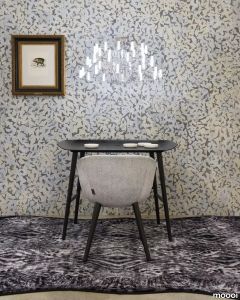
moooi > Wallcovering
Wallcovering with gauze and Japanese paper representing the shiny coat of the Armoured Boar. The upper part of its body was covered in black and golden scales which gave it an ornamental appearance.
JEAN PAUL GAULTIER - MESAÏ - Printed polyester fabric with graphic pattern _ LELIEVRE

LELIEVRE > Wallcovering
Earthtech PUMICE_GROUND
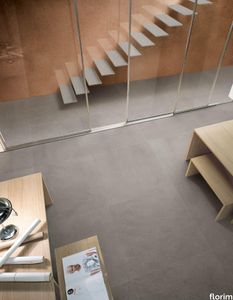
florim > Wallcovering
From an ancient past to a responsible future <p>The collection injects new life into the earth through a sustainable production process, with a strong focus on green management, to offer the architect an exceptional technical and aesthetic performance in compliance with the socio-environmental context and the latest eco-friendly building needs. With EARTHTECH earth becomes “technical earth” with a highly innovative content, offering new solutions to green architecture and fulfilling the new frontiers of circular economy in construction, guaranteeing a sustainable future. <br />EARTHTECH offers a choice of organic textures to observe and touch, thanks to the wide range of finishes (Comfort, Glossy-Bright and structured) which add a tactile and unexpected perceptive dimension for use in all types of application. <br /><a class="btn arrow" href="https://www.florim.com/en/surfaces/the-new-comfort-surface/"> Discover the new Comfort surface </a></p> <p>EARTHTECH/ is also a return to the origins of the Florim brand through a full body technical product that blends surface and thickness and derives from the spontaneous mixing of carefully pre-selected fragments and pigments of different shades which give the material a unique, one-of-a-kind visual effect in each slab, mimicking the amazing variety of colours and elements in nature. The result is a composite product with a textured design, in which the flakes and aggregate grains create an original mélange effect that is vitrified during firing, producing a robust, high-quality and exceptionally strong and wear-resistant product; one which can be used in any type of building setting and weather conditions, even the harshest.</p>
Corteza
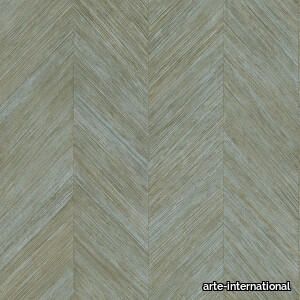
arte-international > Wallcovering
A subtle stripe pattern, inspired by the bark of banana trees. Thanks to the herringbone shape, the motif plays with light and shadow so that the design varies according to the incidence of light.
Chanderi
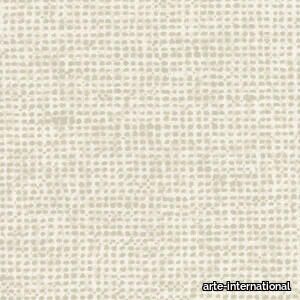
arte-international > Wallcovering
The slightly structured, matte and bicolour weaving structure is discrete and fairly neutral, but still present. In the colour palette, you will find some soft beige to sand shades, as well as striking colours such as sunny orange and tropical teal.
Tesori Lino bianco
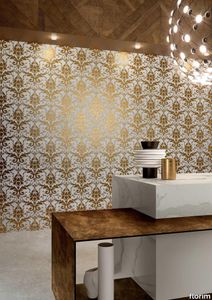
florim > Wallcovering
East and West, a synthesis archieved through Italian taste. «My work often takes me to far-off lands, also remote in terms of their culture and traditions. Even without my being aware of it, I then metabolise these traditions and include them in the designs I subsequently produce.» Matteo Nunziati <p>"It is the architect's task to create a warm, livable space. Carpets are warm and livable. He decides for this reason to spread one carpet on the floor and to hang up four to form the four walls. But you cannot build a house out of carpets. Both the carpet and the floor and the tapestry on the wall required structural frame to hold them in the correct place. To invent this frame is the architect's second task."When Adolf Loos wrote his revolutionary essay on the "principle of cladding" in 1898, architecture was just entering the modern age. Building meant imagining structures capable of putting together different materials, but, Loos affirmed, it must also respect their individual characteristics. "Every material possesses a formal language which belongs to it alone and no material can take on the forms proper to another", the Austrian master therefore maintained. And there is no doubt that the spirit of these words extended throughout most Twentieth Century architecture, regardless of its location or style. When we look at Matteo Nunziati's designs for the CEDIT Tesori collection, we seem to be seeing geometrical purity and attention to detail at the service of a new "truth" of material. Because Matteo Nunziati views ceramics as a form of fabric.<br /> The woven patterns he imagines for the various styles in his collection "“ from Arabian to damask to more geometrical motifs "“ constantly seek to provide the soft, iridescent look of time-worn linen. In them, ceramics are raised from the status of poor relation of marble to become a luxury wall covering in their own right: almost a wallpaper, suitable however for both floors and walls, and an absolutely versatile material. No longer only for beautifying bathrooms, they can create new moods in every room of the house (and elsewhere) starting from the living-room. Naturally, the revolution has been mainly technological. The large slabs produced by CEDIT are more than 3 metres tall, and since they eliminate the serial repetition typical of conventional tiles, they generate a new relationship between the surface and its decoration. However, Nunziati does not use this to create, artist-like, a more eye-catching decorative composition that emphasises the slab's dimensions. Quite the opposite; the patterns he offers us attempt to break down what is left of the boundaries between substrates. In particular, the Arabian and damask styles, in the version with "timeworn" patterning, convey the idea of the ceramic slab as an abstract, almost non-existent material which melts into the decorative motif applied to it, in a kind of pure wall covering.<br /> Through the patient selection of geometrical motifs and tests to verify their suitability for application to ceramic slabs, Nunziati aims to achieve a new material rather than a mere decoration, making this clear by also exploring its tactile dimension, with gouged and relief motifs. His "principle of coverings" therefore relates to ceramics' essence rather than their image: highlighting the versatility which, as we all know, has made ceramics an absolute material, a kind of cement that incorporates structure and finish in a virtually infinite range of applications. This is clearly indicated by the reference to the mashrabiya, a term meaning place where people drink in Arabic, which in Arabian architecture originally referred to the kind of veranda where people used to meet and rest, and over time has come to mean the wooden gratings that screened these places from the sun. Inspired by his trips to the Middle East, for Nunziati the geometric patterns of the mashrabiya become both an outline of his method of work and the form of what in fact becomes the key element in a new idea of space: a real location conceived around a strong, livable surface in which physical substance and decoration overlap to the point where they merge.</p>
Fraction
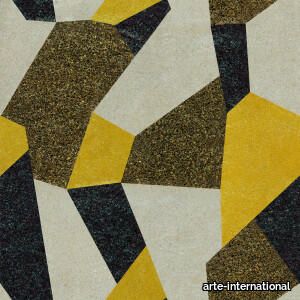
arte-international > Wallcovering
Made of real mica flakes. The sheets with the mica flakes are hand-dyed, after which large, irregular shapes are punched through them. These are carefully inlaid into a repetitive pattern. The pattern is a modern interpretation of the colourful, classic terrazzo floors.
Bayadère

arte-international > Wallcovering
Wallpaper with a refined linen texture and a striped pattern in a variety of colour combinations, from subtle tone-on-tone creations to eye-catching contrasts.
Queen Cobra
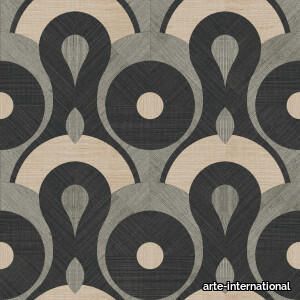
arte-international > Wallcovering
The Queen Cobra Wallcovering is made from hand-woven sisal fibres, inspired by the Queen Cobra’s rhythmic curves and grassy habitat. The design comprises round overlapping shapes in a pattern with a hypnotic feel to it.
Campo
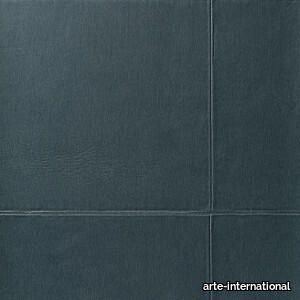
arte-international > Wallcovering
A pattern with the authentic look of soft, luxurious leather, complete with its natural nuances and irregularities. The hand-stitched leather details contribute to the realistic look of this refined wallpaper.
Golden Tiger Wallcovering
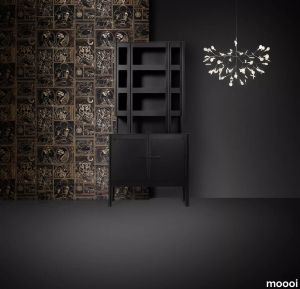
moooi > Wallcovering
The Golden Tiger Wallcovering is made from laser cut wood veneer with gold foil. Golden Tigers couldnt bear to be parted from their loved ones so the wallcovering depicts this friendly Extinct Animal surrounded by his animal friends.
Flex
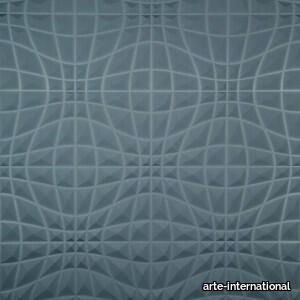
arte-international > Wallcovering
Angular, geometric blocks. At a distance, the blocks become smaller forming a rigid and ‘hilly’ décor.
Damas
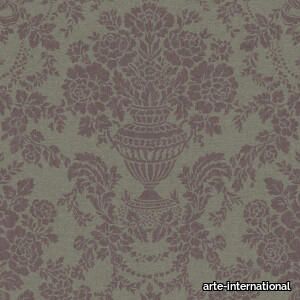
arte-international > Wallcovering
A centuries-old pattern which has been given a radically new reinterpretation. It has a popular weathered effect, while the linen structure adds a touch of roughness.
MERIDA - SOL - Raffia wall fabric with graphic pattern _ Élitis

Élitis > Wallcovering
The **Merida - Sol** is a stunning raffia wall covering mounted on a non-woven backing, offering permanent fire resistance and excellent light resistance. Composed of 100% raffia, this panel-based design is part of the Merida collection, which captures a vibrant, pop-inspired aesthetic. The collection draws inspiration from the interplay of sunlight filtering through geometric windows in a modern villa, casting dynamic patterns on shimmering water, lush mango trees, and concrete surfaces, creating an urban oasis of bold colors and artistic harmony. A 3D file of the product is available for download, allowing for seamless integration into design projects. Élitis, the supplier behind this exquisite product, is a globally recognized interior design brand founded in 1988, celebrated for its innovative, high-quality wallcoverings, fabrics, and furniture that blend contemporary luxury with timeless elegance.
Tesori Broccato bianco

florim > Wallcovering
East and West, a synthesis archieved through Italian taste. «My work often takes me to far-off lands, also remote in terms of their culture and traditions. Even without my being aware of it, I then metabolise these traditions and include them in the designs I subsequently produce.» Matteo Nunziati <p>"It is the architect's task to create a warm, livable space. Carpets are warm and livable. He decides for this reason to spread one carpet on the floor and to hang up four to form the four walls. But you cannot build a house out of carpets. Both the carpet and the floor and the tapestry on the wall required structural frame to hold them in the correct place. To invent this frame is the architect's second task."When Adolf Loos wrote his revolutionary essay on the "principle of cladding" in 1898, architecture was just entering the modern age. Building meant imagining structures capable of putting together different materials, but, Loos affirmed, it must also respect their individual characteristics. "Every material possesses a formal language which belongs to it alone and no material can take on the forms proper to another", the Austrian master therefore maintained. And there is no doubt that the spirit of these words extended throughout most Twentieth Century architecture, regardless of its location or style. When we look at Matteo Nunziati's designs for the CEDIT Tesori collection, we seem to be seeing geometrical purity and attention to detail at the service of a new "truth" of material. Because Matteo Nunziati views ceramics as a form of fabric.<br /> The woven patterns he imagines for the various styles in his collection "“ from Arabian to damask to more geometrical motifs "“ constantly seek to provide the soft, iridescent look of time-worn linen. In them, ceramics are raised from the status of poor relation of marble to become a luxury wall covering in their own right: almost a wallpaper, suitable however for both floors and walls, and an absolutely versatile material. No longer only for beautifying bathrooms, they can create new moods in every room of the house (and elsewhere) starting from the living-room. Naturally, the revolution has been mainly technological. The large slabs produced by CEDIT are more than 3 metres tall, and since they eliminate the serial repetition typical of conventional tiles, they generate a new relationship between the surface and its decoration. However, Nunziati does not use this to create, artist-like, a more eye-catching decorative composition that emphasises the slab's dimensions. Quite the opposite; the patterns he offers us attempt to break down what is left of the boundaries between substrates. In particular, the Arabian and damask styles, in the version with "timeworn" patterning, convey the idea of the ceramic slab as an abstract, almost non-existent material which melts into the decorative motif applied to it, in a kind of pure wall covering.<br /> Through the patient selection of geometrical motifs and tests to verify their suitability for application to ceramic slabs, Nunziati aims to achieve a new material rather than a mere decoration, making this clear by also exploring its tactile dimension, with gouged and relief motifs. His "principle of coverings" therefore relates to ceramics' essence rather than their image: highlighting the versatility which, as we all know, has made ceramics an absolute material, a kind of cement that incorporates structure and finish in a virtually infinite range of applications. This is clearly indicated by the reference to the mashrabiya, a term meaning place where people drink in Arabic, which in Arabian architecture originally referred to the kind of veranda where people used to meet and rest, and over time has come to mean the wooden gratings that screened these places from the sun. Inspired by his trips to the Middle East, for Nunziati the geometric patterns of the mashrabiya become both an outline of his method of work and the form of what in fact becomes the key element in a new idea of space: a real location conceived around a strong, livable surface in which physical substance and decoration overlap to the point where they merge.</p>
Zerzura
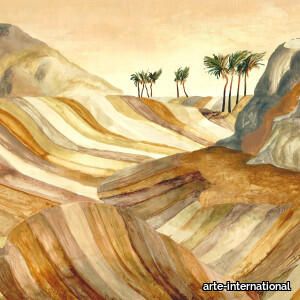
arte-international > Wallcovering
The legend of Zerzura tells the story of a fertile oasis in the desert west of the Nile, of which its existence was never proven. This mythical scene is brought beautifully to life on a velvet background.
Classo
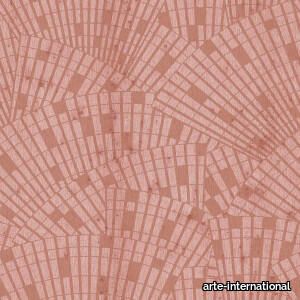
arte-international > Wallcovering
The designs in Classo make you think of eastern fans gently cooling you off from the wall.
Industrial Moka
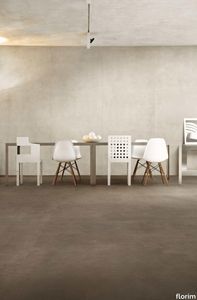
florim > Wallcovering
A cementitious material in its purest and most rigorous form The proposed decorative system defines balanced compositions of eye-catching organic shapes where the fragmentation of the material becomes an element of creative expression.
Curve
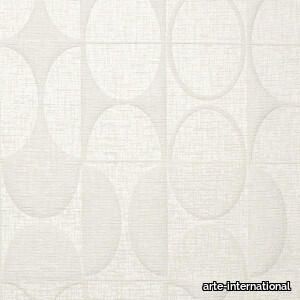
arte-international > Wallcovering
Round, soft shapes with a hint of vintage, incorporated into a subtle grid, this describes Curve best. The textile is made of a warm 3D bouclé fabric.
